After leaving the Amazon (see my Peru Part 1 post here), I took a quick flight from Puerto Maldonado to Cusco. In this post, I’ll recap my week in the Cusco region, including the 4-day Inca Trail trek.
Cusco Arrival and Tour Briefing
Typically I avoid tour groups and all in one travel, but for my week in Cusco I gave in. This was partly out of necessity and partly out of convenience – Peru requires that all Inca Trail hikers go with approved guides, and since I already had to book something for those four days I figured I may as well book the 7-day tour that includes it.
I didn’t look too closely at all the different tour options – I read a good review of the G Adventures 7-day Inca Trail trip, and decided that would be fine. Day 1, arrival day, was pretty uneventful. My flight landed in the early afternoon, and there was a driver waiting for me at the airport. After getting settled at the hotel, we had a short briefing at the local G Adventures office, telling us what the next 6 days would look like. After the briefing, we also had the opportunity to rent any equipment we needed for the trek. I had my own sleeping bag (tent was provided) but I decided to rent some hiking poles and an air mattress.
That evening, I had an early dinner and went straight to bed – I was pretty tired from the Amazon and needed to rest.
Tours and Ollantaytambo
One of the reasons G Adventures does a 7-day tour instead of just the 4-day trek is to force people to have two days to acclimate to the elevation (most of the Inca Trail is from 10,000-14,000 ft). So they built various activities into the schedule the day before we started the trek to keep us busy.
The first activity was a visit to a traditional weaving co-op run by the women of the Ccaccoccollo community outside of Cusco (yes, I spelled that correctly!). This was my favorite stop of the day for two reasons: alpacas and llamas. But I learned a lot there too. The women showed us how they spin the wool into yarn, how they make dyes out of various local natural substances, and how they complete the dying process. They also told us about various local foods and the many varieties of potato and corn grown in the region.
Our next stop was the Cuyo Chico village. Here, we learned how locals make adobe bricks and pottery out of several types of mud and clay found in the region. After lunch, we headed to Ollantaytambo, where we were staying for the night. After checking into the hotel, we did a quick 1/2 mile hike up to some Inca storehouse ruins in the mountain. It was short but really steep, a good warmup for our Inca Trail hike starting the next day.
Though I’d typically do a day like this on my own rather than in an organized group, I thought G Adventures and our guide did a great job putting together a set of interesting and varied activities. I was able to learn a lot about local culture and traditions, which I really appreciated.
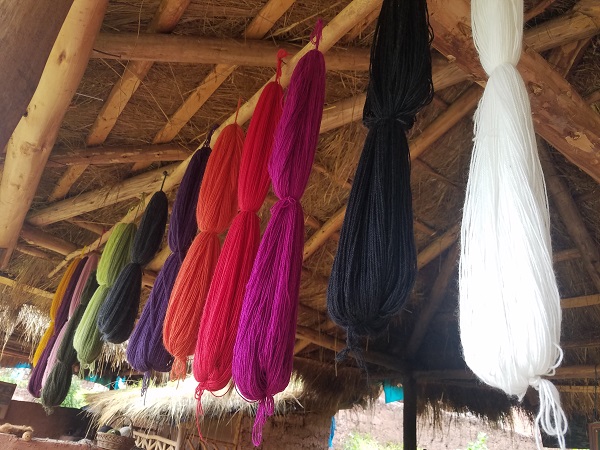
Some of the many colors of yarn the women create using natural, local dyes.
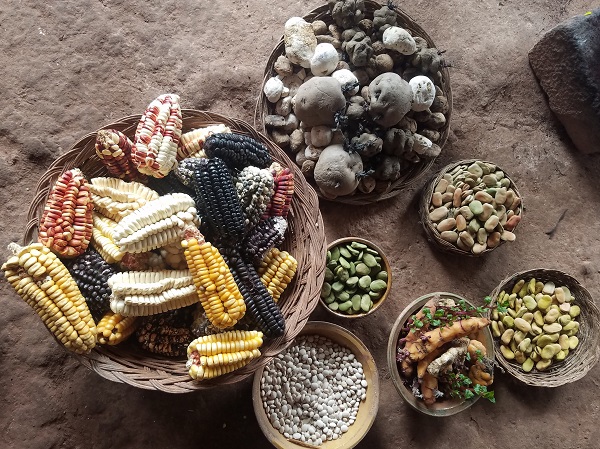
An array of traditional foods.
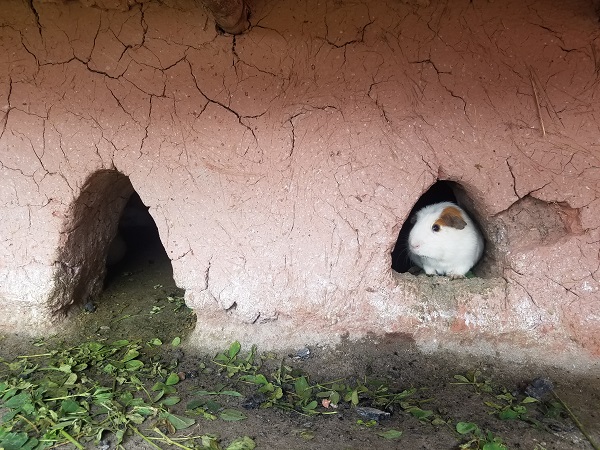
A guinea pig – a local delicacy but not a food I was interested in trying. I think they’re more fun to look at 🙂
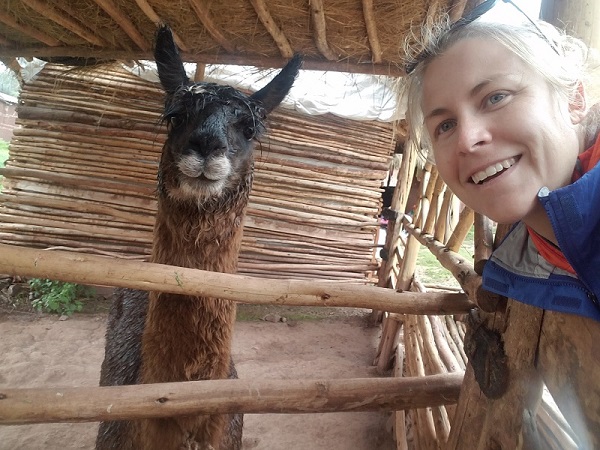
One of many selfies I took with llamas and alpacas (this one’s a llama).
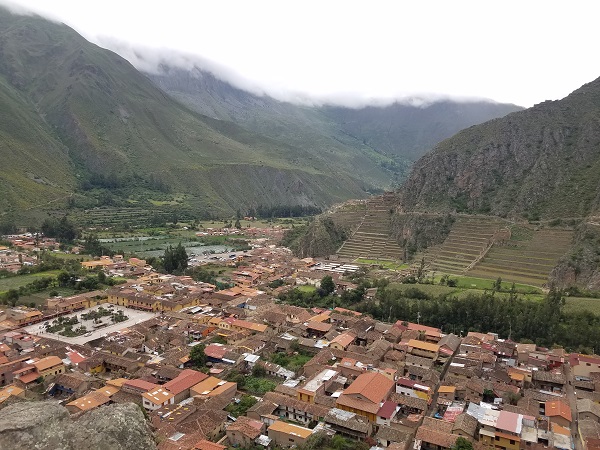
Ollantaytambo, the afternoon before we started the trek.
Inca Trail Day 1
The Inca Trail is a 4-day trek, culminating in the arrival at Machu Picchu on the last day. To get started, we needed to get to “km 82,” which is about a 1-hour drive from Ollantaytambo. There, we met with our many porters, got our gear in the right bags, and showed our passports. Each guest carried just a day pack; the porters carried a 6-kg duffel bag for each of us, plus the tents, food, and everything else we needed along the way. Each of them had about 40-50 pounds!
The first day was pretty easy (keep in mind I’m pretty fit and hike a lot). There were some villages along the way where you could pay to use a bathroom or buy a drink and/or snack. Our whole group of 15 hikers plus 3 guides was together the whole way (8 miles or so), but it would have been nice to split up so we weren’t constrained by the pace of the slowest hiker. We had pretty good weather, and I even got a little sunburned when the sun came out during the last few miles (at that elevation burn happens quickly!). We also saw several Inca and pre-Inca ruins along the way.
The porters had lunch ready for us when we arrived at the site, and again rushed ahead of us after lunch to make sure the campsite was ready when we arrived there in the afternoon. They did this every day – moved really fast on the trail with all that weight so that everything was ready for us when we arrived. They’re pretty amazing.
Our campsite the fist day was at a bit over 10,000 feet. Even though it’s summer there, that elevation means it gets pretty cold at night! I was glad I had a good sleeping bag and several layers of clothing.

Elevation map of the Inca Trail.
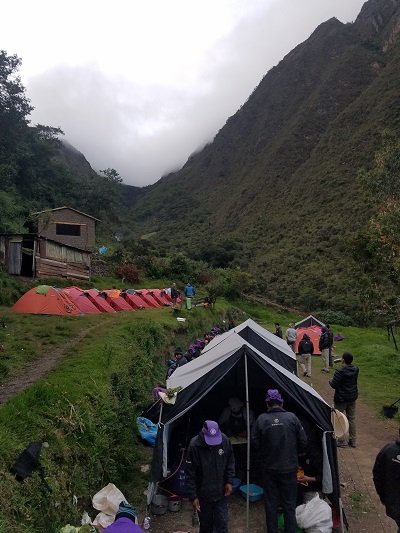
One of our campsites on the Inca Trail.
Inca Trail Day 2
We had an early wake-up call the next morning: 5am! After breakfast, we started out on the most challenging day of the trek.
Our group stayed together for the first part, but as the elevation increased and the uphill got steeper, we started to get more spaced out. We trekked up to the high point of the whole trail, Dead Woman’s Pass, which is at almost 14,000 feet. It’s a pretty steep incline to get there from 10,000 feet over just a few miles! I was fortunate – I didn’t have any issues with altitude sickness or any trouble breathing at the high elevation. A few others in my group weren’t so lucky and looked pretty miserable for the next couple of days.
We didn’t get any great views at the pass; it was cloudy there that day. It was also chilly. But it was an otherworldly feeling to watch hikers descend from the pass into the clouds – visibility was only about 30 or 40 feet so they disappeared into the clouds pretty quickly. I was also surprised that even at that elevation, there were a few flowers and even hummingbirds.
After everyone regrouped, we set off for the downhill leg of the day. We got a bit of rain on the downhill portion but I didn’t mind – I was just feeling grateful that it didn’t start till we were finished with the climb!
We got to camp early – around 12:30. The porters had lunch ready for us, and we had a lazy afternoon, a big dinner, and an early bedtime because we were all exhausted.
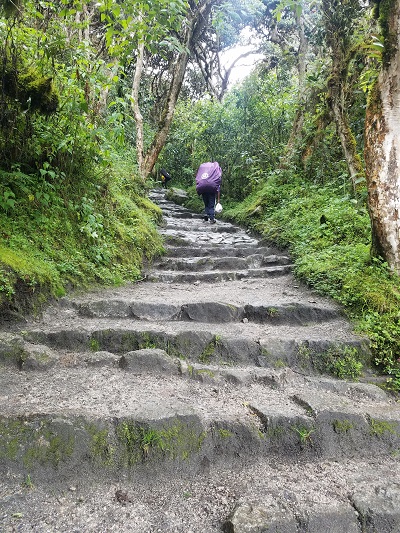
A porter ahead of me on a steep uphill. He has about 20 kilos in his pack.
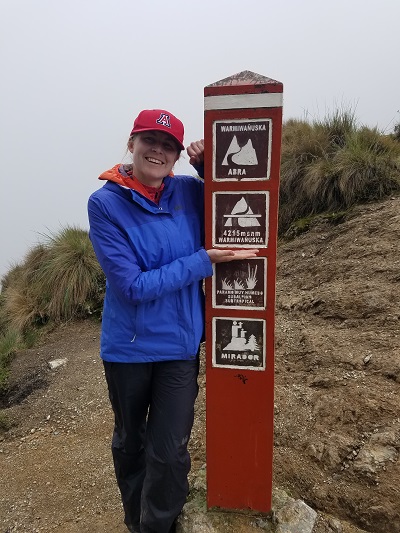
I made it! The highest point on the Inca Trail, at an elevation of 4,215 m/13,828 ft.

It was pretty foggy near the top!
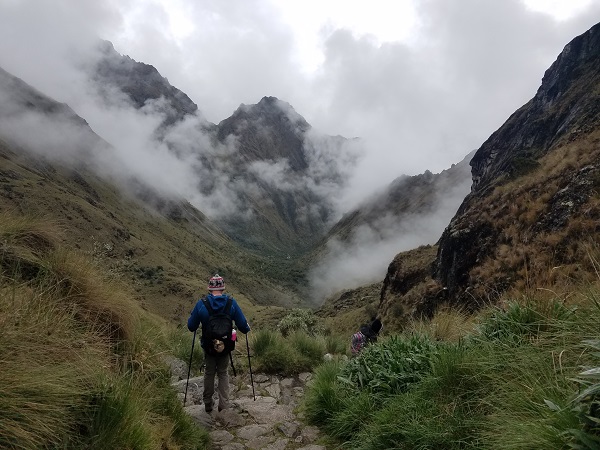
Going down a steep downhill.
Inca Trail Day 3
After a cold (under 40F/4C) night highlighted by unrelenting rain pouring on our tents, we had another 5am wake-up call. Day 3 of the trek is the longest in terms of distance but is mostly downhill so isn’t as daunting as Day 2. But we did need to start early due to the distance.
The first part of the day was uphill, and it was cold and rainy. Definitely the least enjoyable part of the whole trek. But this was really the only part that was miserable out of the four days, and apparently at this time of year it’s not uncommon for the WHOLE trek to be that miserable. So I’ll consider myself lucky.
The rain got lighter as we started on the downhill, but it was still slippery and we had to be really careful on the slippery stone steps. We were able to stop at several Inca ruins, including Sayaqmarka, which was my favorite of the day. We had lunch just off the trail, then continued on through what seemed to be the wet side of the mountains. It was a really lush forest, much different than the relatively arid landscape we hiked through on the first day. There were bamboo plants, ferns, and lots of moss on the ground.
We arrived at our final campsite around 4:30, and, to my excitement, there were a few llamas passing through. One even had a baby!
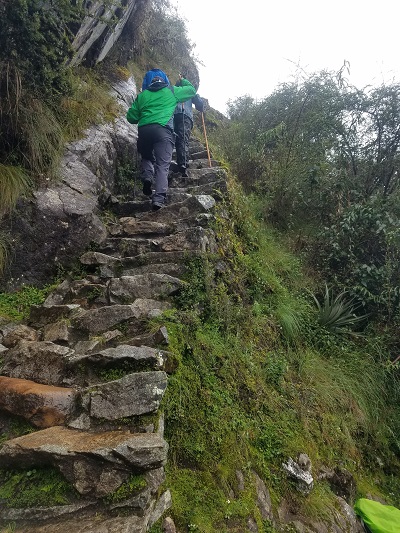
A very precarious staircase from the main trail up to some ruins.
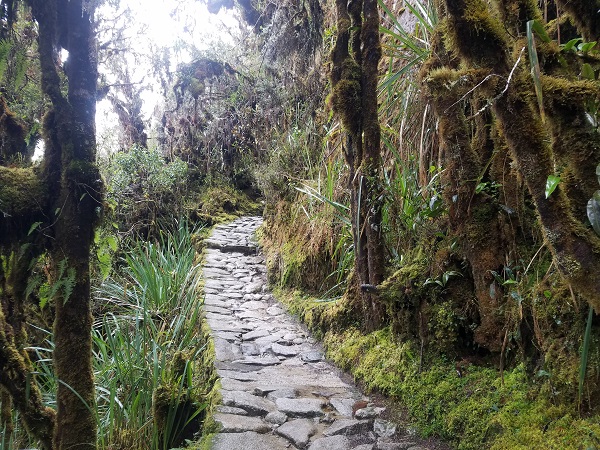
On the third day of the trek. The plants were different than the first two days – we were on the wet side of the mountains.
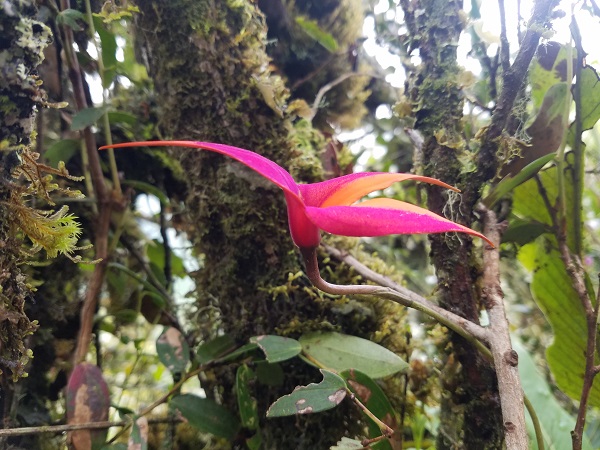
A stunning orchid.
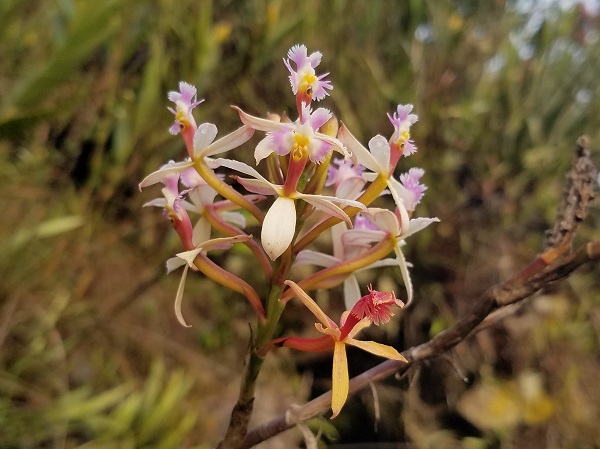
Some more orchids.
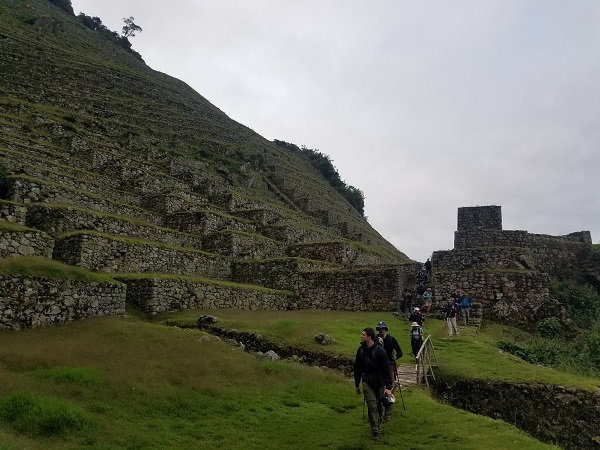
Inca ruins near our last campsite.
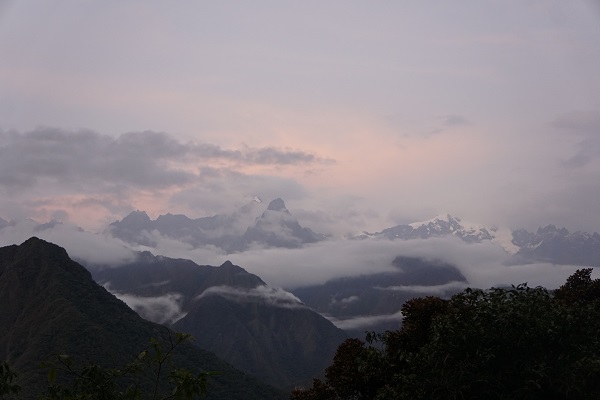
Sunset view from our Day 3 campsite.
Inca Trail Day 4 and Machu Picchu
The last day of the hike was our earliest start – we woke up at 4am! This was so that the porters could pack up our tents for the last time and get to the train in time to get home (there’s apparently only one departure). After they left, we had to wait around for a while, but finally were able to go through the checkpoint to Machu Picchu at 5:30.
It’s only a few miles from the last campsite to Machu Picchu, and the trail is pretty flat as well. We got to the Sun Gate just a couple hours later. The Sun Gate is where you get the first view of Machu Picchu (it was probably one of the original Inca entrances). When we turned the corner, I almost cried because it was so stunning (and also probably because I was pretty tired!).
We had had overcast and/or rainy weather consistently since the first day of the trek, but when we turned the corner for our first view of Machu Pichhu, there were clear skies. It’s not common to have clear weather in the rainy season, and we were lucky to have any at all. We were even luckier that it coincided with our arrival at Machu Pichhu. Apparently, most hikers this time of year can’t see Machu Pichhu at all from the Sun Gate due to the clouds and fog. Given that I was prepared for the worst, to turn the corner after 4 days of rigorous hiking and camping and have a picture-perfect view was simply incredible.
After some photos, we continued on to Machu Picchu. We had a breakfast break, then a guided tour of the site. It stayed sunny the whole time. After the tour, I wandered around on my own for another hour then took the bus down the treacherous road to Agua Calientes town at the base of the mountain. Our group met up at a restaurant overlooking the raging river and had a giant celebratory meal. The meal was followed by a train, then bus, with an arrival back in Cusco at 7:30 pm. By then, I was exhausted. But I was also really happy and proud of myself for making it!
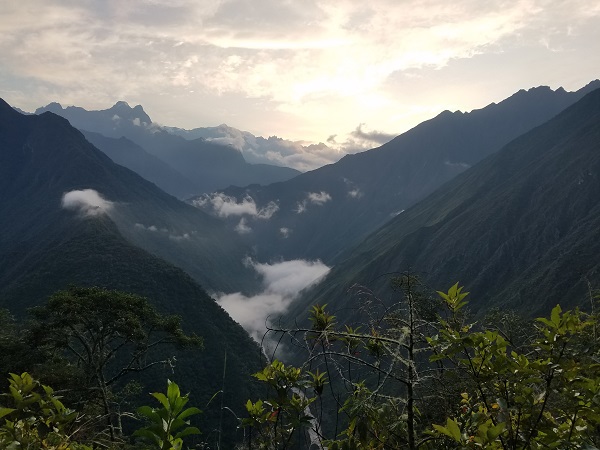
Sunrise on the last morning of the trek, as we started off toward Machu Picchu.
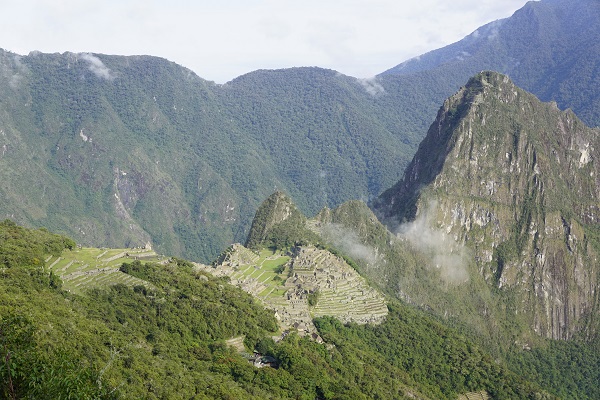
A view of the whole Machu Picchu site.

Obligatory Machu Picchu selfie.
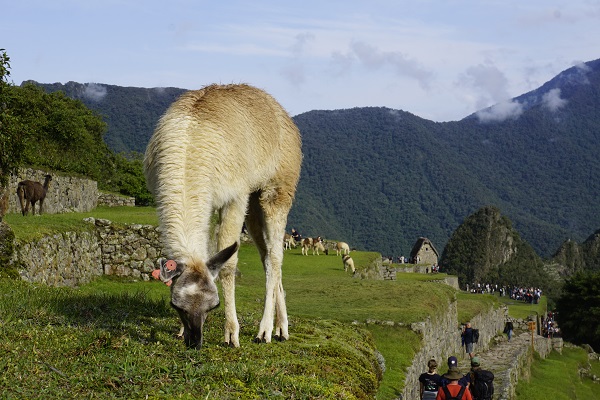
Llama grazing on the Machu Picchu terraces.
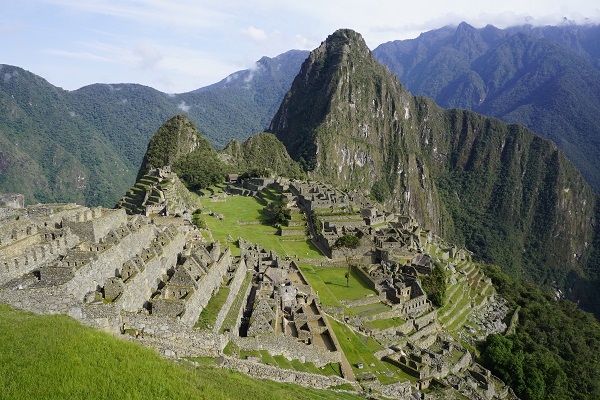
The classic “postcard” pic of Machu Picchu. And we had blue skies after several days of fog and rain! I got pretty lucky.

A couple viscachas (closely related to chinchillas) lounging in the Machu Picchu ruins.
Lima/Miraflores
The next morning, I flew to the last stop of my 2-week trip, Lima. I had a couple days of workshops and meetings with one of UA’s partner universities. This post is long enough already, so I won’t go into detail. But it was a productive visit and we were lucky enough to get to the beach at Miraflores and see some surfers in between the work meetings.
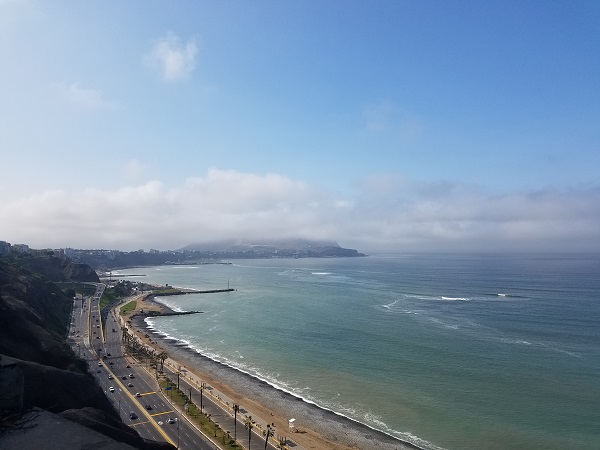
The beach at Miraflores, Lima.
Summary
I had a great time in Peru. Between the Amazon, the Andes, the cities, and the ocean, the trip had a bit of everything. The people were so friendly, the food was so good, and the nature is absolutely incredible. I hope I get a chance to visit Peru again.
Share this Post
